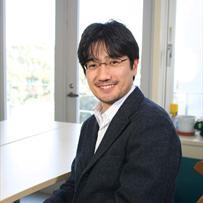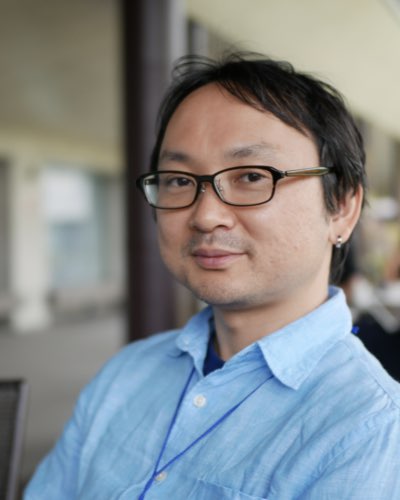Immunology with Numbers
The immune system is the nature-made intelligent system, which is responsible for maintaining the homeostasis of our body. In the last decades, hundreds of new genes, cytokines, and cell types have been identified as essential components of the immune system. Nonetheless, we have not yet comprehended the principles of how the immune system can detect and mend a variety of errors and anomalies in our body. Still far insufficient is the information of the numbers and their dynamics in the immune system because the immune responses are orchestrated by dynamic and quantitative changes in different molecules and immune cells. In this workshop, we focus on this problem. As a special guest, we have Professor Benny Chain at UCL who pointed out and has been pursuing this problem. With him as well as other speakers, we investigate how this problem can be addressed by combining the new technologies and insights in modern immunology and quantitative biology.

Basic information
- Date & Time: 20th/May/2019 12:30--18:10
- Location: Faculty House, in Komaba I Campus, Univ. Tokyo.
- Supported by JSPS (細胞ダイバース, 基盤B).
- Organized by Taishin Akiyama & Tetsuya J. Kobayashi
- Registration is required!!! (jump to registration form)
Programme
- 12:30-12:40: Opening Remark
- Session1: Immunology
- 12:40-13:10: Taishin Akiyama (RIKEN, Japan)
- Development, function, and maintenance of thymic antigen-presenting cells required for shaping T cell repertoire
- 13:10-13:40: Shohei Hori (Univ. Tokyo, Japan)
- Coupling the genetic and phenotypic heterogeneity in the adaptive immune system: a role for regulatory T cells
- 13:40-14:10: Tetsuya J. Kobayashi (Univ. Tokyo, Japan)
- Understanding adaptive immune system as reinforcement learning
Short break
- Session2: Quantitative Cell Biology & Immunology
- 14:30-15:00: Akihito Nakajima (Univ. Tokyo, Japan)
- Integration of cell polarity and direction sensing in chemotactic migration of immune cells
- 15:00-15:30: Kazuhiro Aoki (NIBB, Japan)
- Live-cell quantification of the concentration and dissociation constant of endogenous proteins by a combination of CRISPR/Cas9 genome editing and FCS/FCCS
- 15:30-16:10: Mutsuhiro Takekawa (Univ. Tokyo, Japan)
- Spatio-temporal regulation of stress-activated MAPK signaling and its role in cytokine production
Short break
- Session3: Sequencing & Immunology
- 16:30-17:00: Nozomu Yachie (Univ. Tokyo, Japan)
- DNA barcode technologies to dissect heterogeneous biological systems
- 17:00-17:30: Takaji Matsutani (Repertoire Genesis Inc., Japan)
- A new NGS-based TCR/BCR repertoire analysis and its application to tumor immunology
- 17:30-18:10: Benny Chain (UCL, UK)
- The T cell receptor repertoire in health and disease
- 18:10-18:15: Closing Remak
Speakers' information & abstract
Taishin Akiyama
- Team Leader of Laboratory for Immune Homeostasis
- RIKEN Center for Integrative Medical Sciences

Thymus generates large part of T cell in the body. During the development of T cells in the thymus, self-tolerant T cells and regulatory T cells are selected. Thymic antigen presenting cells are essential for the T cell selection. Because these cells are relatively rare and difficult to be isolated, mechanisms underlying development and function of these cells are not yet fully understood.
There are mainly 3 types of antigen-presenting cells in the thymus, dendritic cells, B cells and thymic epithelial cells. Thymic epithelial cells in the cortex region is essential for selection of T cells recognizing self-MHC molecules. On the other hand, thymic epithelial cells in the medulla region (mTECs) have unique contribution to removing auto-reactive T cells in the thymus by expressing a wide variety of self-antigens that normally express in tissue-specific antigens.
Many stressors due to environmental changes cause disturbance of immune systems and thymic atrophy. Several studies indicated that these stressors cause damages on thymic epithelial cells in addition to thymic T cells. One of our aims is to elucidate how the thymic damages is recovered and its failure impacts on T cell functions by utilizing mathematical modeling.
Shohei Hori
- Professor of Laboratory of Immunology and Microbiology
- Graduate School of Pharmaceutical Sciences, The University of Tokyo

There are two fundamental and distinct levels of cellular heterogeneity in the adaptive immune system: one is genetic, characterized by the enormous diversity of lymphocyte antigen receptor genes, while the other is phenotypic, which is diverse functional states that lymphocytes can adopt. These two layers of heterogeneity must be appropriately coupled so that, upon antigen recognition, an antigen-specific lymphocyte clone acquires an effector function tailored to the specific antigen it recognizes and protects our body from various diseases including infectious diseases, cancer, allergy, and autoimmune diseases. How appropriate coupling of these two layers of heterogeneity is achieved and whether and how dysregulated coupling leads to diseases represents a fundamental unresolved question. In my talk, I will argue that a small subpopulation of T lymphocytes called regulatory T cells (or Treg cells), which are specialized in suppressing immune responses and promoting tissue homeostasis, plays a key role in this coupling process.
Tetsuya J. Kobayashi
- Associate Professor, Laboratory for Quantitative Biology
- Institute of Industrial Science, the University of Tokyo

Adaptive immune system is responsible for recognizing and detecting various pathogens never being experienced and also for learning their signatures and the ways how they should be eliminated. Functionality of such an information-processing system cannot be attributed to individual building components of the system, which highlights the importance of the framework to coordinate different pieces of biological knowledge for understanding the whole immune system. In this talk, we demonstrate how we can frame the process of adaptive immune system into reinforcement learning, and derive the well-known learning rule of the adaptive immunity, clonal selection, from this framework. A simulation of a very simple model shows that the experimental observed T cell diversity can be obtained after convergence of the learning. We also discuss how we can extend this framework for understanding and analyzing the adaptive immune system.
Akihiko Nakajima
- Assistant Professor, Laboratory for Biophysics (link)
- Department of General Systems Studies, Graduate School of Arts & Sciences, the University of Tokyo

Immune cells such as neutrophils and lymphocytes migrate towards the source of peptides and chemokines in damaged tissues and lymph nodes. How these cells integrate complex information from surroundings to determine the direction of movement has been elusive. Using neutrophil-like cell line HL60 as a model system, we have studied how such ability is realized from a combined approach of fluorescent live-cell imaging, microfabrication, and nonlinear physics. In my talk, I will show how different modes of migration and sensing ability are emerged from dynamical systems properties such as reaction-diffusion characteristics inherent in intracellular chemical reaction and discuss the relationship between such properties and behavioral strategies of migrating immune cells.
Kazuhiro Aoki
- Professor, Division of Quantitative Biology
- Okazaki Institute for Integrative Bioscience, National institutes of Natural Sciences

The numerical simulations required for kinetic modeling in live cells critically require parameters such as protein concentrations and dissociation constants (Kd). However, only a limited number of parameters have been measured experimentally in living cells. Here, we describe an approach for quantifying the concentration and Kd of endogenous proteins at the single-cell level with CRISPR/Cas9-mediated genome editing and fluorescence cross-correlation spectroscopy (FCCS). First, the mEGFP gene was knocked in at the end of the mitogen-activated protein kinase 1 (MAPK1) gene, encoding ERK2. Next, the HaloTag gene was knocked in at the end of the ribosomal S6 kinase 2 (RSK2) gene. We then used fluorescence correlation spectroscopy (FCS) to measure the protein concentrations of endogenous ERK2-mEGFP and RSK2-HaloTag fusion constructs in living cells, revealing substantial heterogeneities. Moreover, FCCS analyses revealed temporal changes in the apparent Kd values of the binding between ERK2-mEGFP and RSK2-HaloTag in response to epidermal growth factor (EGF) stimulation. Our approach presented here provides a robust and efficient method for quantifying endogenous protein concentrations and dissociation constants in living cells.
Mutsuhiro Takekawa
- Professor, Division of Cell Signaling and Molecular Medicine
- The Institute of Medical Science, the University of Tokyo

Mammalian cells are frequently exposed to a wide range of environmental stresses, such as ultraviolet rays, ionizing radiation, genotoxins, and oxidative stress. In coping with the barrage of these and other stresses, multi-cellular eukaryotic organisms have developed a strategy as to how damaged cells will respond to stresses. In general, if the intensity of the damage is moderate, the cell will seek to repair the damage. If, however, the damage to a cell is too severe to be repaired, the affected cells are eliminated by apoptosis. This cell death reduces the risk to the organism as a whole, such as development of a cancer. Such a crucial decision between survival and death is, at least in part, mediated by the stress-activated p38 and JNK MAPK pathways (collectively called SAPK pathways). SAPKs are a group of serine/threonine protein kinases that convert extracellular stress stimuli into diverse cellular responses, including apoptotic cell death and cytokine production, through phosphorylation of specific target proteins. Perturbation of these critical signaling systems is involved in a variety of life-threatening diseases, including auto-immune diseases, cancers, and neurodegenerative disorders. Therefore, these signaling systems are of clinical importance. Recent advances in the fields of molecular-imaging technology and mathematical science have not only made it possible to identify spatio-temporal dynamics of signaling molecules that participate in the MAPK pathways, but have also provided new insights into the basic principles underlying the regulation of MAPK signaling and the resulting biological outcomes. In this talk, we will introduce our recent findings regarding the MAPK signaling pathways, with particular emphasis on spatio-temporal regulation of SAPKK and its role in cellular stress responses and proinflammatory cytokine production.
Nozomu Yachie
- Associate Professor, Yachie Synthetic Biology Laboratory
- Research Center for Advanced Science and Technology, the University of Tokyo
Beyond its impact on genome sequencing, massively parallel pyrosequencing technologies have enabled many high-throughput experiments with the concept of DNA barcoding. In this talk, I will first introduce the significance of this approach with an example of high-throughput protein-protein interaction mapping using Barcode Fusion Genetics Yeast Two-Hybrid technology that we developed previously. I will then discuss our current progress in developing two DNA barcode technologies capable of analyzing dynamic changes in molecular profiles and cellular behaviors of heterogeneous biological systems including tumorigenesis, differentiation, and mammalian development. While high-resolution molecular snapshots of cells can be obtained by various omics and single cell technologies, they all require destruction of samples, which prevents analyzing changes in molecular profiles and phenotypes of individual cell lineages at a large scale. One of the possible directions to overcome this issue is the development of a method by which the same clone of interest (or at least its close relatives) can be isolated from different time-course samples for downstream molecular analyses. Another direction is the development of a cell-embedded “event recording” system in which high-resolution molecular information of a cell or cells can be obtained at the time of observation, together with past molecular and cellular event information stored in synthetic DNA tapes or other “heritable polymers” from the same cell. By harnessing the concept of DNA barcoding and genome editing, my group has been developing CloneSelect and Barclock technologies for these two orthogonal directions. CloneSelect aims to analyze omics dynamics in a given clonal cell linage of a heterogeneous population, and Barclock seeks to obtain high-resolution whole-body cell lineages of mammalian development.
Takaji Matsutani
- Corporate Officer, Research & Development Dept.,
- Repertoire Genesis Inc.

NGS-based TCR/BCR repertoire analyses have been remarkably advanced and widely applied to basic and clinical immunology. Recently, we have developed a new high-throughput sequencing method based on an adaptor-ligation PCR to identify all TCR/BCR genes in human and mouse. This RNA-based unbiased amplification method allows us to accurately quantify abundance of T cell and B cell clones, and thereby evaluate immune diversity and similarity between samples. This method provides highly accurate and reliable results compared with multiplex PCR method. In this lecture, we’d like to introduce our technologies as well as recent study regarding a predictive biomarker using the NGS-based TCR repertoire analysis for response to immune checkpoint inhibitor in lung cancer patients. Only about 20% patients have positively response to expensive therapy with anti-PD-1 antibodies for lung cancer patients. Thus, diagnostic biomarker to select patient treatment with easy-obtainable peripheral blood is eagerly awaited. Our study showed that TCR diversity in peripheral T cell subpopulations correlated very well with response to anti-PD-1 antibody treatment, suggesting that immune diversity will be good marker for response to the immune checkpoint inhibitor. As seen in this application, immune monitoring by NGS-based repertoire analysis in the setting of disease and patient treatment will lead to understanding immune response and pathogenic mechanisms underlying infectious disease, autoimmune disease and cancer. In the future, fast, low-cost and high-capacity NGS-based repertoire analysis will be essential technology for progress in medicine.
Benny Chain
- Professor, Group of Innate2Adaptive
- Division of Infection and Immunity, University College London

The human adaptive immune system makes robust decisions which regulate quantitative and qualitative parameters of a complex physiological system, to prevent invasion and destruction of tissues by the enormous array of microorganisms which share our environment. Remarkably, these decisions are made by a distributed system made up of moving parts (e.g. T lymphocytes) and whose key recognition components (T cell antigen receptors) are assembled by a stochastic process. In this seminar, I will review some basic properties of the repertoire of T cell antigen receptors, and then outline the basic features of an open-source quantitative, robust and economical experimental and computational pipeline which allows us to capture the repertoire of T cell receptors in samples of tissues or blood. We have used this method to describe basic features of the T cell repertoire of naïve and memory T cells in a group of healthy human volunteers, and to compare this with the T cell repertoire within tumors from a cohort of patients with primary non-small cell lung cancer. We observe that the T cell compartment maintains significant levels of diversity even in the face of long-term chronic clonal expansion. We hypothesise that the enormous diversity of the T cell receptor repertoire is a key feature ensuring that the adaptive immune response is made up of many co-operating T cell clones, which may confer both robustness and flexibility